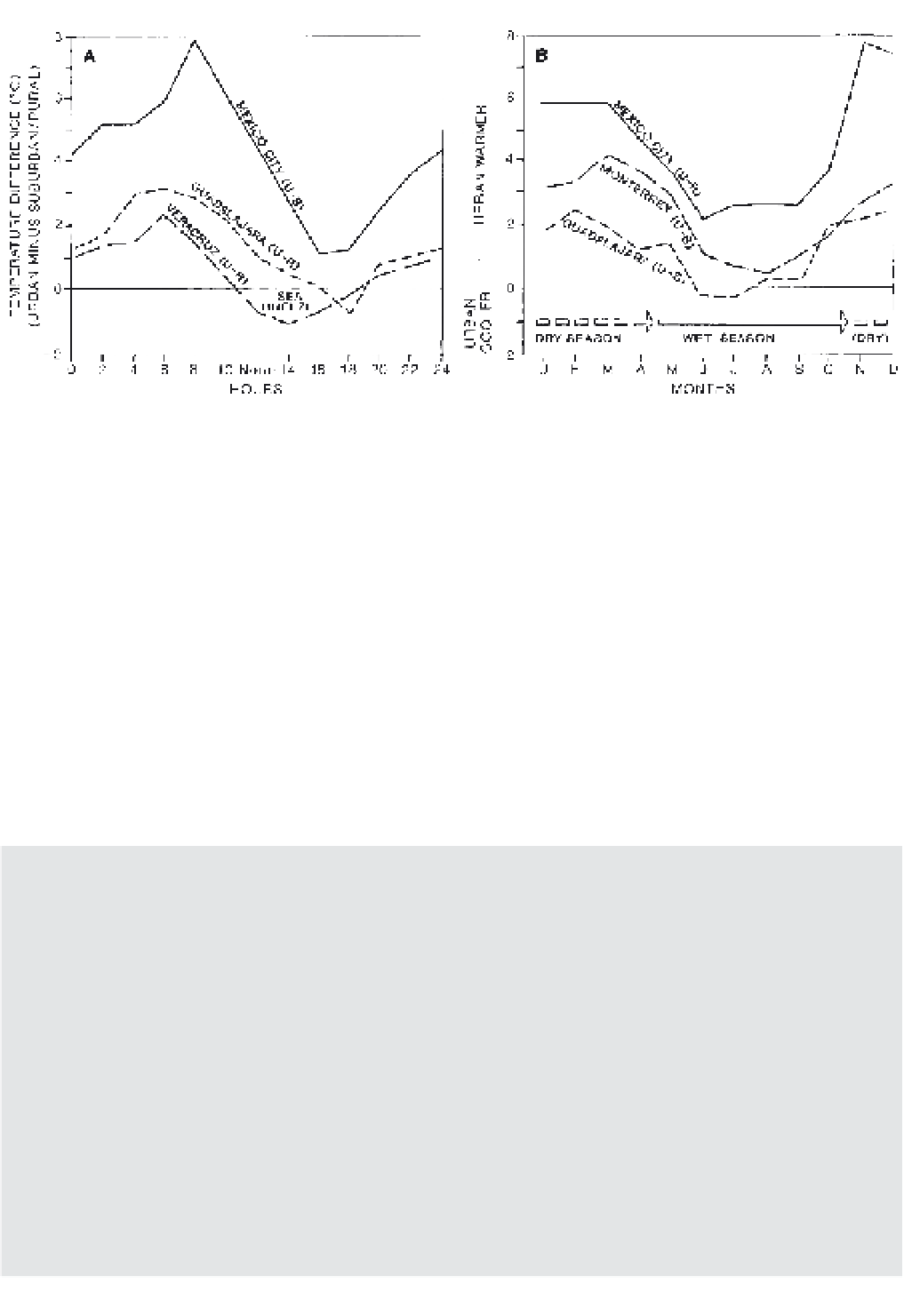Geoscience Reference
In-Depth Information
Figure 12.31
Diurnal (A) and seasonal (B) heat island intensity variations (i.e. urban minus rural or suburban temperature differences)
for four Mexican cities (see Table 12.4).
Source
: Jauregui (1987). Copyright ©
Erdkunde
. Published by permission.
general, urban-rural minimum temperature differences
vary between -2° and
15°C. Two other tropical cities
exhibiting urban heat islands are Nairobi, Kenya
(
3.5°C for minimum temperatures and
1.6°C for
maximum temperatures) and Delhi, India (
Table 12.4
Population (1990) and elevation for four
Mexican cities.
Population
Elevation
(millions)
(metres)
3 to 5°C
for minimum temperatures and
2 to 4°C for maximum
Mexico City (19°25´N)
15.05
2380
temperatures).
Despite insufficient data, there seems to be some
urban precipitation enhancement in the tropics, which is
maintained for more of the year than that associated with
summer convection in mid-latitudes.
Guadalajara (20°40´N)
1.65
1525
Monterey (25°49´N)
1.07
538
Veracruz (19°11´N)
0.33
SL
Source
: Jauregui (1987).
SUMMARY
especially where there is an ample water supply (including
irrigation). Forests have a lower albedo (<0.10 for
conifers) than most other vegetated surfaces (0.20
to 0.25). Their vertical structure produces a number
of distinct microclimatic layers, particularly in tropical
rainforests. Wind speeds are characteristically low in
forests and trees form important shelter belts. Unlike
short vegetation, various types of tree exhibit a variety of
rates of evapotranspiration and thereby differentially affect
local temperatures and forest humidity. Forests may have
a marginal topographic effect on precipitation under
convective conditions in temperate regions, but fog drip
is more significant in foggy/cloudy areas. The disposition
of forest moisture is very much affected by canopy
interception and evaporation, but forested catchments
Small-scale climates are determined largely by the relative
importance of the surface energy budget components,
which vary in amount and sign depending on time of
day and season. Bare land surfaces may have wide
temperature variations controlled by
H
and
G
, whereas
those of surface water bodies are strongly conditioned by
LE
and advective flows. Snow and ice surfaces have small
energy transfers in winter with net outgoing radiation offset
by transfers of
H
and
G
towards the surface. After snow
melt, the net radiation is large and positive, balanced by
turbulent energy losses. Vegetated surfaces have more
complex exchanges usually dominated by
LE
; this may
account for >50 per cent of the incoming radiation,






